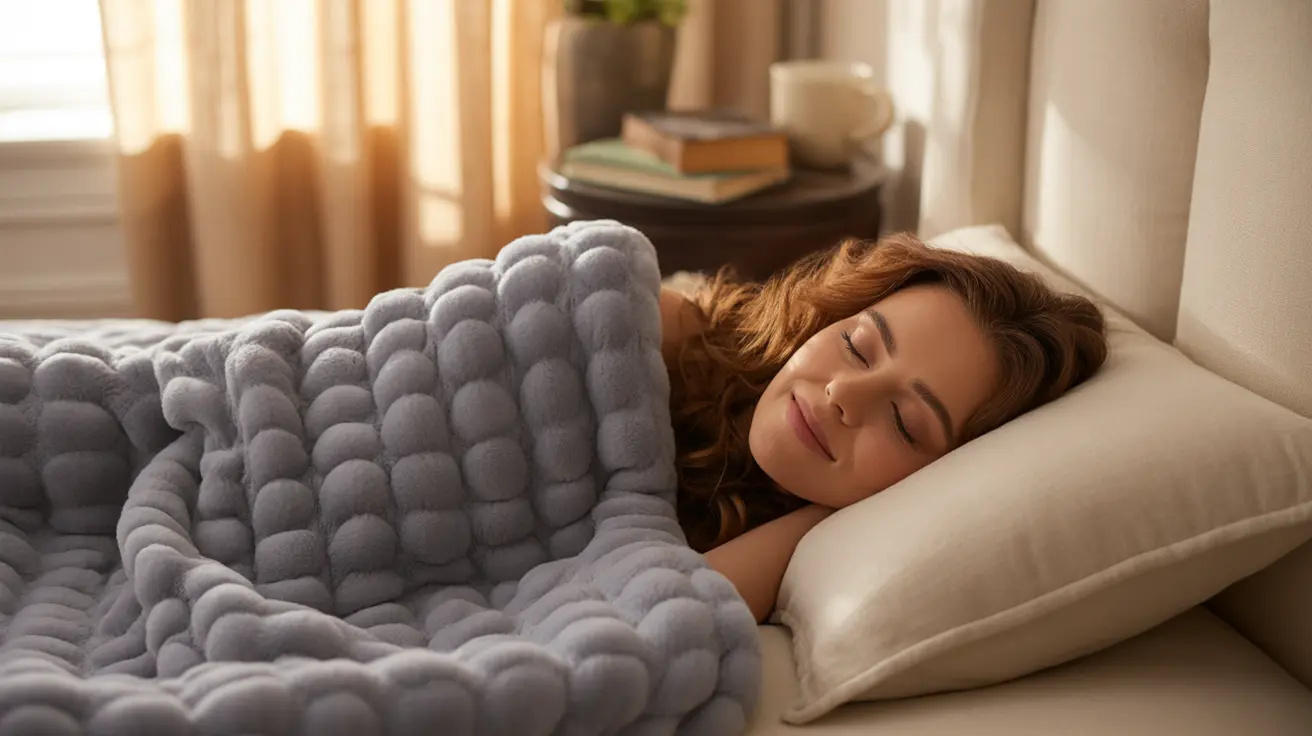Weighted blankets have gained significant popularity as a natural way to improve sleep quality and reduce anxiety. These specialized blankets, filled with materials like glass beads or poly pellets, are designed to provide gentle, distributed pressure across the body. As interest in non-pharmaceutical approaches to better sleep and stress relief grows, many people are turning to weighted blankets as a potential solution.
Understanding how weighted blankets work and whether they're right for you requires exploring the science behind their effectiveness, proper usage guidelines, and important safety considerations. Let's dive into what research reveals about these increasingly popular sleep aids.
How Weighted Blankets Work: Understanding Deep Pressure Stimulation
Weighted blankets function through a therapeutic technique called deep pressure stimulation (DPS). This gentle, distributed pressure across the body triggers several physiological responses:
- Increased serotonin production
- Reduced cortisol levels
- Enhanced melatonin release
- Activated parasympathetic nervous system
When the body experiences this consistent, gentle pressure, it naturally shifts from a "fight or flight" state to a more relaxed "rest and digest" mode. This transition can help create the ideal conditions for relaxation and sleep.
Research-Backed Benefits of Weighted Blankets
Scientific studies have demonstrated several potential benefits of using weighted blankets:
Sleep Improvements
Research indicates that weighted blankets may help people fall asleep faster and experience better sleep quality. Users often report feeling more refreshed in the morning and experiencing fewer nighttime disturbances.
Anxiety Reduction
Clinical studies suggest that the deep pressure stimulation from weighted blankets can help reduce anxiety symptoms. Many users report feeling calmer and more grounded when using these blankets during stressful periods or before bedtime.
Additional Benefits
Some users have reported improvements in:
- Chronic pain management
- Restless leg syndrome symptoms
- Focus and concentration
- Overall stress levels
Choosing the Right Weighted Blanket
Selecting an appropriate weighted blanket involves several key considerations:
Weight Guidelines
The general recommendation is to choose a blanket that's approximately 10% of your body weight. For example:
- 130-pound person: 13-pound blanket
- 150-pound person: 15-pound blanket
- 180-pound person: 18-pound blanket
Size and Material
Consider the blanket's dimensions and fabric composition. Look for breathable materials if you tend to sleep hot, and ensure the size adequately covers your body without hanging too far over the bed's edges.
Safety Considerations and Contraindications
While weighted blankets are generally safe for adults, certain groups should exercise caution or avoid use:
- People with respiratory problems
- Those with circulatory issues
- Children under age 2
- Individuals who can't easily move the blanket independently
Frequently Asked Questions
Do weighted blankets really help with anxiety and sleep, and what does the research say? Studies show that weighted blankets can significantly improve sleep quality and reduce anxiety symptoms. Research indicates that the deep pressure stimulation helps increase serotonin and melatonin while decreasing cortisol levels, supporting both better sleep and reduced anxiety.
How do weighted blankets work to calm the body and mind, and what is deep pressure stimulation? Weighted blankets use deep pressure stimulation, which applies gentle, distributed pressure across the body. This pressure activates the parasympathetic nervous system, triggering a relaxation response that helps calm both body and mind.
What are the possible benefits and risks of using a weighted blanket for adults and children? Benefits include improved sleep, reduced anxiety, and potential help with conditions like restless leg syndrome. Risks are minimal for most adults but include possible discomfort or difficulty moving the blanket. Children under 2 should not use weighted blankets, and older children should use age-appropriate weights.
How heavy should a weighted blanket be, and how do I choose the right size for my needs? Choose a weighted blanket that's approximately 10% of your body weight. The blanket should cover your body comfortably without excessive overhang, and you should be able to move it easily on your own.
Are weighted blankets safe for everyone, and who should avoid using them? Weighted blankets are generally safe for healthy adults and children over 2. However, individuals with respiratory problems, circulatory issues, or those who can't easily move the blanket should avoid using them. Always consult with a healthcare provider if you have specific medical concerns.




